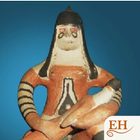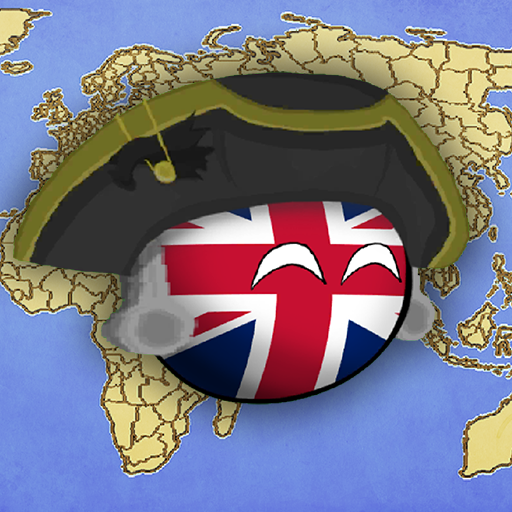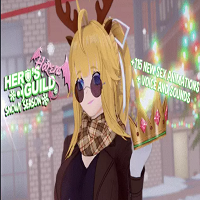Arte e cultura indígena1


Rating

Genre
GAMES

Size
56.5 MB
Version
1
Update
Jul 16 2024
Arte e cultura indígena APK for Android. Download now!
 Download
Download
You will get to know the art of 7 indigenous Brazilian ethnicities.
The indigenous art is varied in the forms, uses and meanings of its artifacts for each people. You will get to know the art of 7 indigenous Brazilian ethnicities. Your challenge is to assemble an indigenous piece that has been broken into several pieces.
Main theme: sugar cane economy.
Indication: 6th to 9th grade Elementary School.
Document: artifacts from seven indigenous cultures.
Game mode: puzzle.
Goals:
- Know the cultural diversity of indigenous peoples.
- Characterize the artifacts by their materials, styles, shapes and uses. -
- Understand artifacts as material culture and identity marks of a people.
- Identify people in different spaces and times.
Content
Arte e Cultura Indígena, or Indigenous Art and Culture, is a broad and complex topic encompassing the diverse artistic expressions and cultural practices of indigenous peoples across the globe. It's crucial to understand that there is no single, monolithic indigenous culture; rather, there are thousands of distinct indigenous groups, each with its own unique traditions, artistic styles, and worldviews. These cultures are often deeply intertwined with the natural world, reflecting a profound respect for the environment and a belief in the interconnectedness of all living things.
Indigenous art forms are incredibly varied, ranging from intricate beadwork and weaving to powerful sculptures and vibrant paintings. These art forms often serve multiple purposes, encompassing practical, ceremonial, and spiritual dimensions. A beautifully woven basket, for example, may be used for storing food while simultaneously embodying cultural values and artistic skill. Similarly, a carved mask might be worn during a sacred ritual, connecting the wearer to ancestral spirits and embodying the power of the natural world.
Music and dance are integral components of many indigenous cultures, playing vital roles in storytelling, ceremonies, and social gatherings. Through rhythmic movements and evocative melodies, indigenous peoples express their history, beliefs, and connection to the land. Songs and dances often depict creation stories, recount historical events, or celebrate the cycles of nature. The powerful drumming and chanting that accompany many indigenous ceremonies create a sense of unity and connection, fostering a shared experience among participants.
Oral traditions are also essential to the preservation and transmission of indigenous knowledge, history, and cultural values. Stories, legends, and myths are passed down through generations, providing a framework for understanding the world and one's place within it. These narratives often contain important moral lessons, ecological knowledge, and historical accounts, serving as a vital link to the past.
The visual arts of indigenous peoples often feature intricate patterns and symbolic imagery that reflect their unique cultural perspectives. Geometric designs, animal motifs, and depictions of natural elements are common themes, each carrying specific meanings and significance within the culture. Colors also play a crucial role, with different hues representing various aspects of the natural world, spiritual beliefs, or social status.
Unfortunately, many indigenous cultures have faced significant challenges, including colonization, forced assimilation, and the loss of ancestral lands. These historical injustices have had a devastating impact on indigenous communities, leading to the suppression of their languages, traditions, and artistic practices. However, despite these hardships, indigenous peoples have demonstrated remarkable resilience, continuing to practice and revitalize their cultures in the face of adversity.
Efforts are underway globally to recognize and protect indigenous rights, including the right to cultural expression and self-determination. Museums and cultural institutions are increasingly collaborating with indigenous communities to ensure the accurate representation and respectful display of their art and cultural heritage. Furthermore, indigenous artists are gaining recognition on the international stage, sharing their unique perspectives and artistic talents with a wider audience.
Understanding and appreciating indigenous art and culture requires a willingness to engage with diverse perspectives and recognize the inherent value of these rich traditions. By learning about the history, beliefs, and artistic expressions of indigenous peoples, we can gain a deeper understanding of the interconnectedness of human cultures and the importance of preserving cultural diversity. Supporting indigenous artists and cultural initiatives is crucial for ensuring the continued flourishing of these vital traditions for generations to come. It is a journey of continuous learning and respect, acknowledging the profound contributions of indigenous peoples to the world's cultural tapestry.
The preservation of indigenous languages is paramount to the survival of these cultures. Language is not merely a tool for communication; it is the vessel through which culture, history, and knowledge are transmitted. When a language is lost, a wealth of cultural heritage is lost along with it. Revitalization efforts are underway in many communities, focusing on language immersion programs and the integration of indigenous languages into education systems.
Indigenous knowledge systems, encompassing traditional medicine, ecological practices, and sustainable resource management, offer valuable insights into living in harmony with the natural world. These knowledge systems, developed over generations of observation and interaction with the environment, hold crucial lessons for addressing contemporary environmental challenges. Recognizing and respecting indigenous knowledge is essential for promoting sustainable development and ensuring the well-being of both human societies and the planet.
The resilience and adaptability of indigenous cultures are testaments to the strength and enduring spirit of indigenous peoples. Despite facing ongoing challenges, they continue to innovate, adapt, and create, ensuring the survival and evolution of their cultural heritage. Supporting indigenous communities in their efforts to preserve and revitalize their cultures is not only an act of justice but also an investment in the future of cultural diversity.
By embracing the richness and diversity of indigenous art and culture, we can enrich our own understanding of the world and our place within it. It is a journey of discovery, appreciation, and respect, acknowledging the profound contributions of indigenous peoples to the global cultural landscape.
2 / 5 ( 581 votes )









